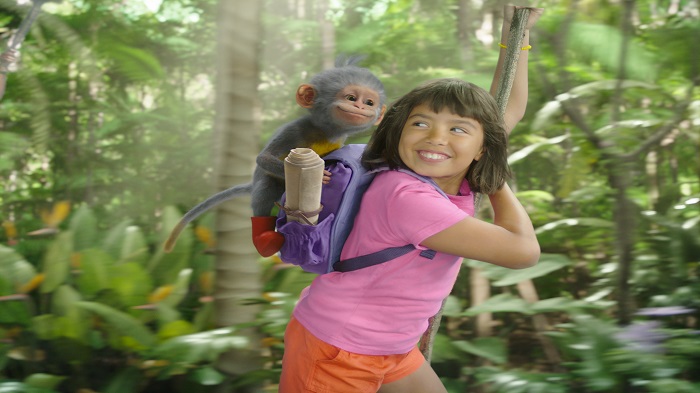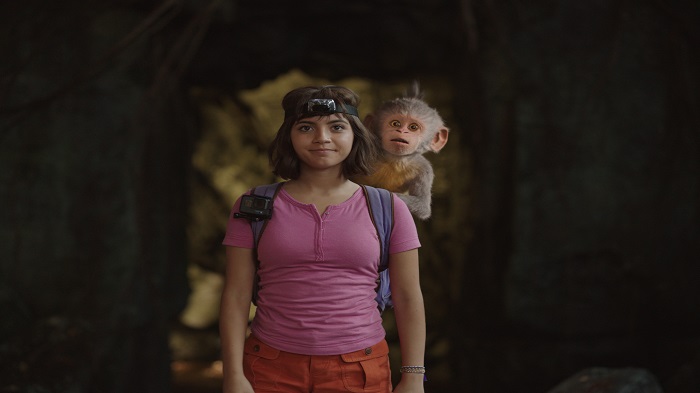
Mill Film studio’s first major motion picture film Dora and the Lost City of Gold has bagged revenue of $90.5 million at the box office worldwide against a production budget of $49 million. Fans have been eagerly waiting for the live-action adaptation of Nickelodeon’s popular television series Dora the Explorer. Paramount’s long-planned live-action Dora the Explorer movie proves for an appreciably peppy entertainment. With director James Bobin, the movie is starred by Isabela Moner as the titular character, with Eugenio Derbez, Michael Peña, Eva Longoria, and Danny Trejo in supporting roles.
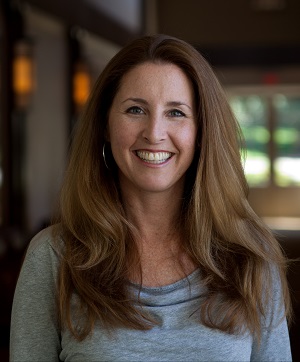 AnimationXpress engaged the movie VFX supervisor production Lindy De Quattro in an exclusive conversation to gather more information about the movie on the VFX front. When we asked her how she got associated with the movie, she said “I got a call from production that they were looking for a VFX supervisor to be on the ground in London with the director, James Bobin. My kids had been big Dora fans for many years, and I was already a fan of James’ brand of comedy so I was really excited to join.”
AnimationXpress engaged the movie VFX supervisor production Lindy De Quattro in an exclusive conversation to gather more information about the movie on the VFX front. When we asked her how she got associated with the movie, she said “I got a call from production that they were looking for a VFX supervisor to be on the ground in London with the director, James Bobin. My kids had been big Dora fans for many years, and I was already a fan of James’ brand of comedy so I was really excited to join.”
The movie includes over 800 VFX shots where 300 of those shots were required for creature animation and Mill Film has completed about 150 of those shots. The movie was in the post-production from mid-November 2018 through mid-June 2019 however most of the heavy shot works were done in the last four months.
This was Mill Film’s major motion picture flagship project which is a live-action remake of the classic Nickelodeon’s television series Dora the Explorer, thus Quattro wanted to focus on two big overarching concepts. One was to make it as funny as possible and second to maintain the integrity of the original cartoon. “All while making it look realistic and well integrated into the scene,” she added.
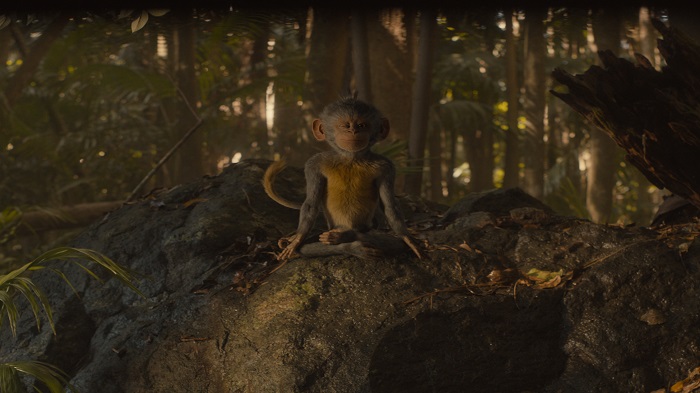
50 per cent of the movie was also assigned to MPC as well and the major assets were also shared between the two studios. In addition to that, they have also split some of the sequences between the two studios. When we asked her about the experience she said, “I was really pleased with the consistency of the work across the two studios, and because they are both under the Technicolor umbrella that made it much easier to share assets, shots, and editorial information.”
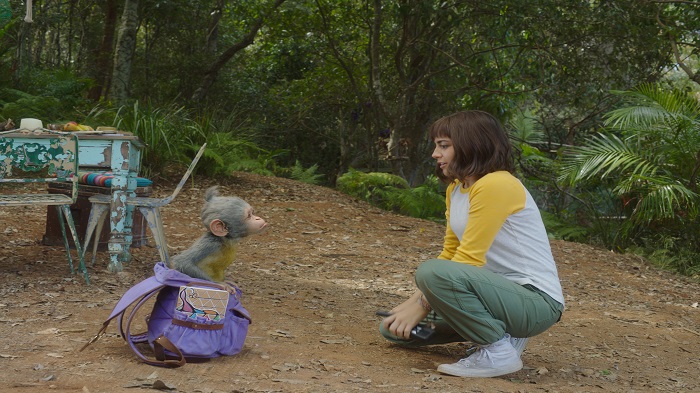
For the movie, there were around 200-300 team members across all the Technicolor companies involved according to Quattro. Here is the excerpt which will give a deeper insight into the VFX work of the movie:
If you could share a little what are the unique VFX techniques and trends followed by your the team in the movie?
In terms of technology, this film didn’t require a bunch of development. The trickiest thing to figure out for us was how to take a couple of realistic characters like Boots and Swiper and have them move in a way that was reminiscent of the original 2D cartoon. We spent a lot of time on anim tests and rig adjustments to see how far we could deviate from realistic physics to give our characters a bit more squash-and-stretch and their motion a bit more hang and zip without completely separating them from the real people and environments around them.
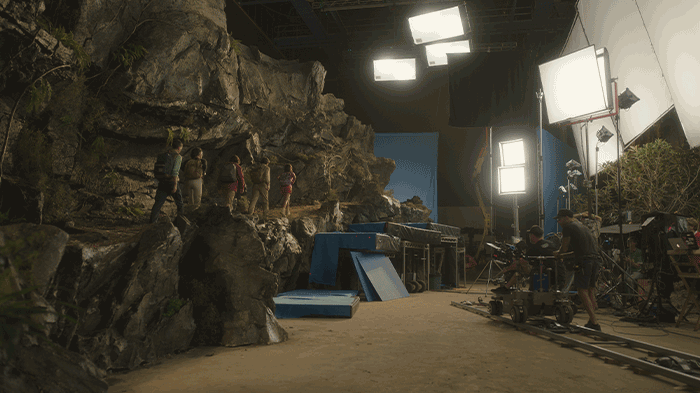
Will you enlighten us about the creation of hidden Inca city Parapata?
We really wanted to be as accurate as possible to Incan architecture and Incan culture so we pulled a lot of reference of Machu Picchu and other Incan ruins. Coincidentally my daughter had just returned from a Christian service trip there with her school, so she had a lot of great images for me to use. We had a rough blueprint of the city from the production designer and we used that as our starting point to actually build out the city in 3D. We created all the buildings and went through a few iterations of different layouts until the travel of the characters through the city (as dictated by our plates) made sense with our build. Once we had the models, we began to texture everything and then added set dressing like trees, grasses, the marketplace stalls, flags that blew in the wind, statuaries, etc. Because we see Parapata in many different lighting environments and we also see it destroyed and put back together, it really only made sense to approach it mostly 3D. Only the background panoramas were added as matte paintings.
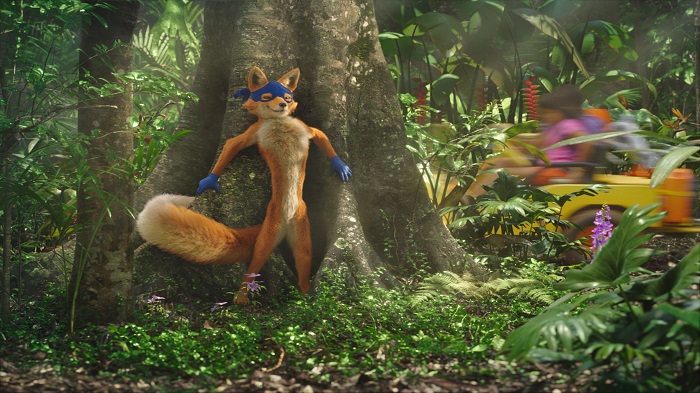
Could you tell us more about the creation of Boots?
Boots was a hybrid of a Capuchin and a Spider Monkey, with a dash of the original cartoon design. We wanted to make sure he was realistic and would hold up in a live-action plate with real actors, but we also wanted him to preserve the essence of the original 2D cartoon and be cute and appealing to the audience. We basically built him completely photo-realistic and then went back and smoothed out some of the rough edges: fluffed his fur, saturated some of his colours, smoothed out his skin, etc until we found that balance. In the cartoon, Boots can be both very human and very monkey-like, so we knew we’d need him to perform both ways in the film. We customized his rig to be able to achieve both styles of animation.
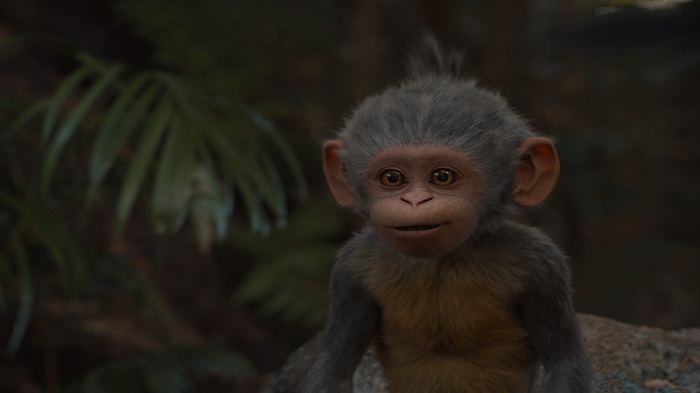
The group travels through numerous obstacles, including quicksand; Inca ruins puzzles, and attacks from forest guards of Parapata to rescue Dora’s parents. Could you tell how the studio created it?
A lot of the puzzles that the kids travel through on their way into Parapata were a great hybrid between the practical shoot and VFX post work. The quicksand was a tank of water with crumbled cork which floated on top. The actors were able to float and swim around in the tank and then we went back in VFX and smoothed out some of the areas where the water showed through gaps in the cork and that kind of thing. The sluice duct which the kids slid down was actually a water slide that was built on set and the actors really did slide down. Isabela Moner was laughing or smiling in almost every take because she really enjoyed it. In VFX we replaced the slide with a stone texture and we added the pool of water and the jungle environment they landed into, but a lot of it was practical. The floor that tilted and sent the kids sliding down toward the spikes was another practical set which we reprojected onto geometry that allowed us to exaggerate the tilt motion and we also added the spikes at the bottom of the pit. When the kids are running through the forest as arrows are flying all around them, the arrows were all added in VFX.
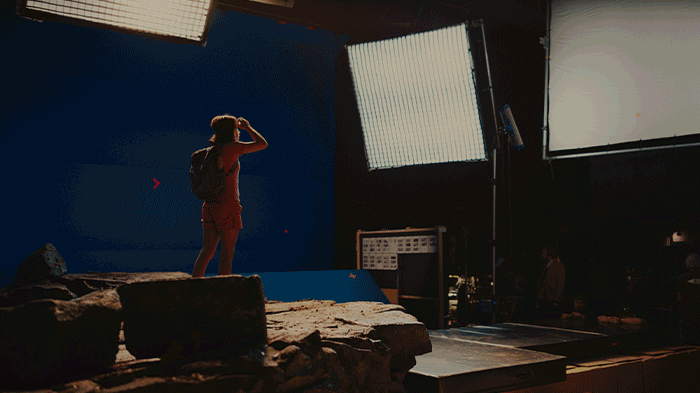
Could enlighten us about the water scene?
In the sluice gate sequence, the kids were shot in a tank and they did their own underwater work. We augmented all the plates with the bubbles, leaves, and swirling water to make it feel more turbulent and to help the audience understand the story point of the sluice gate opening and the kids being sucked down the drain. That sequence was one that I was worried about but it actually came together quickly. We had a great FX team down at Mill Film Adelaide and they established the look within the first couple takes. After that, it was just tweaking the details.
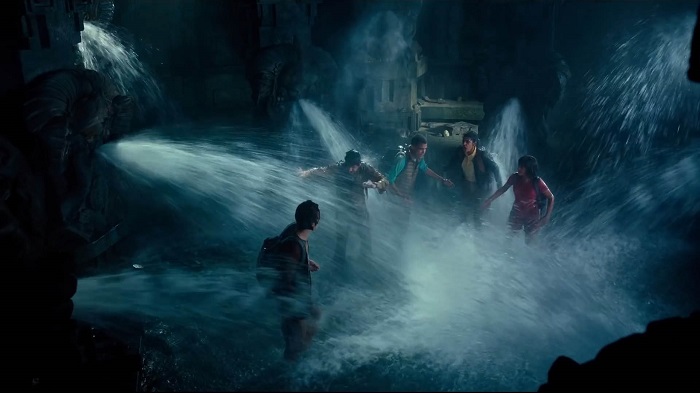
Could you share how the team has created such a surreal mesmerizing jungle environment with creatures, hazardous and giant flowers?
The production designer really set the look for the jungle and then we used that as our jumping-off point for the VFX work. In general, the jungle needed to be very lush and green. The plates were shot in Australia which is far arider than our target look so we added a lot of mist to make it feel damper. We also added additional vines and flowers in several sequences. In the sequence where the kids travel through the giant flowers, there were only a handful of hero flowers built on the set and then we built the rest of them in CG and created the surrounding environment. The pollen was CG although there was some pink powder dusted over the actors’ faces and clothing in some of the later shots.
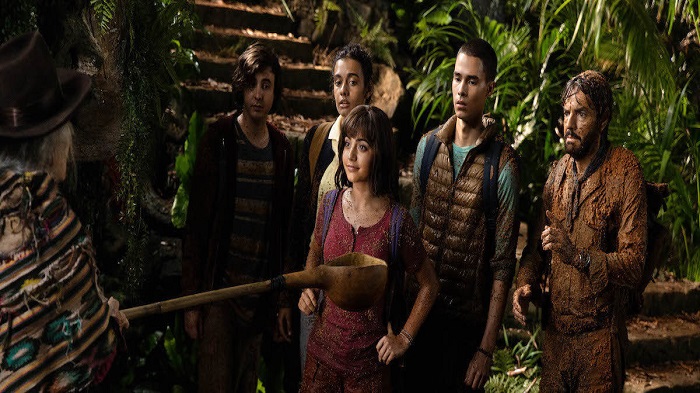
How many blue screens and green screenshots are there in the movie?
There were a lot of blue screens around the Parapata sets and we shot lots of elements of the actors, particularly Dora, over a green screen, but in general, this show was not super screen heavy. There were probably only a couple hundred extraction shots.
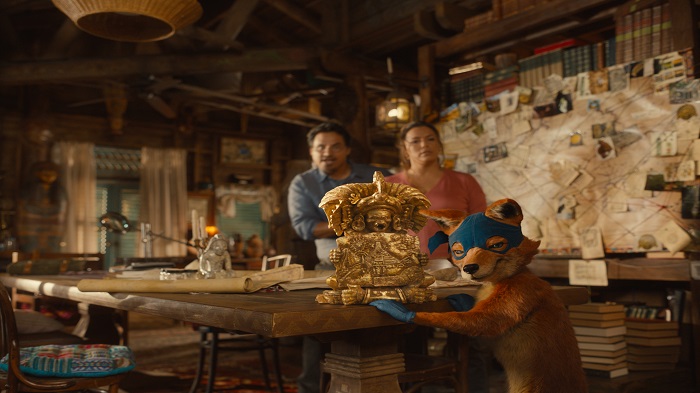
What were the pressure points for the team in creating the movie?
One of the biggest unknowns for us when approaching the VFX in Dora was that a lot of the work was being done at Mill Film which was a brand new facility. We had no idea if they were ready for this volume and complexity of work since we would be their first show ever. There were a few bumps along the road, but we were thrilled with the quality of work coming out of the facility and we had a top knotch leadership team with Matt Everitt as anim supe, Adam Paschke as creative director, and Sharna Hackett as VFX producer.
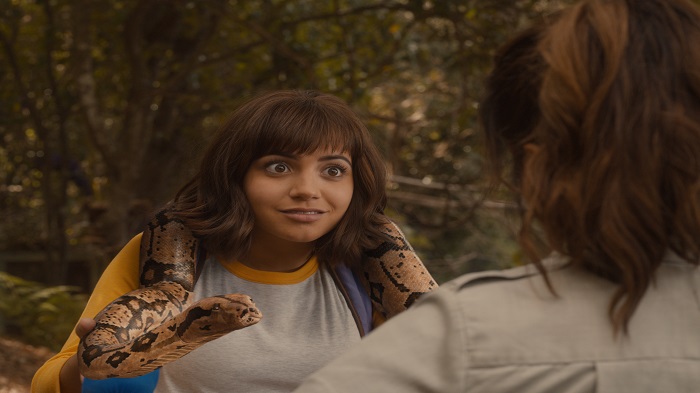
What are the required VFX shots asked by the director for the movie? How did you and your team take it forward?
Our director was primarily focused on the humor of the VFX shots. He was always interested in getting the biggest laugh out of every scene, and Boots and Swiper are certainly there for exactly that purpose. Matt and his animation team pitched a lot of different ideas to James and we also had a consultant who would video himself doing various funny actions for Boots, so the process of coming up with the joke in each shot was very collaborative and always evolved as we progressed. For example, in the shot where baby Boots takes off his boot and chews on it, we probably animated about 8 different options before we settled on that action. Then at the very end, Matt tried a version where Boots had one last chew during his big smile and we all said ‘yes, that’s it!’
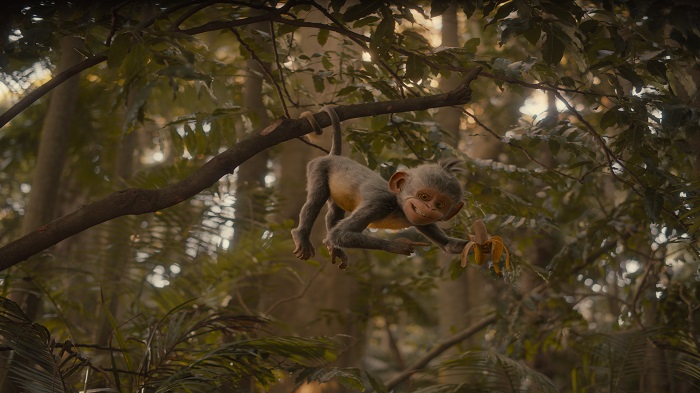
MPC was also assigned a decent portion for the project. Will you share the experience working with them?
The work ended up being split about 50-50 between Mill Film and MPC. All the major assets were shared between the two studios and we even split some sequences between the two studios. I was really pleased with the consistency of the work across the two studios, and because they are both under the Technicolor umbrella that made it much easier to share assets, shots, and editorial information.
